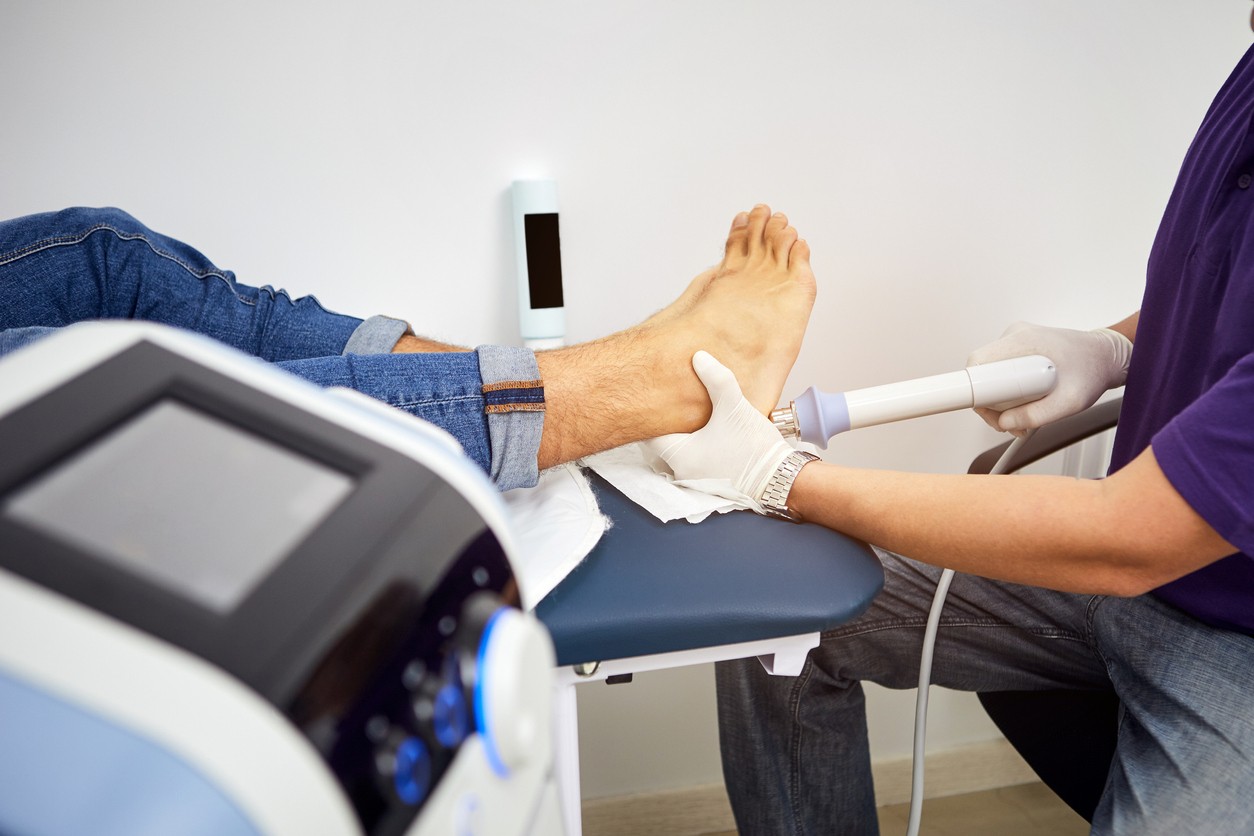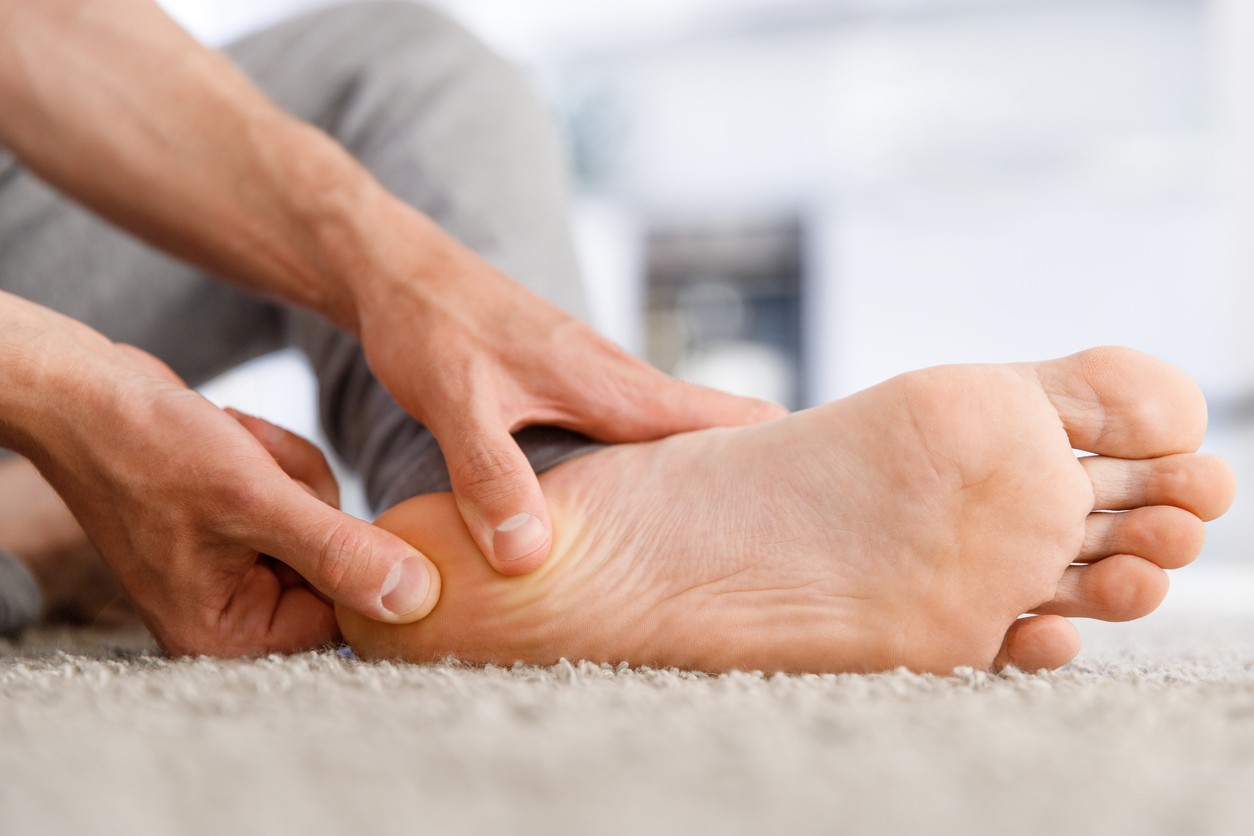How Shockwave Therapy Can Treat Plantar Fasciitis
What is Plantar Fasciitis?
Plantar fasciitis is a common condition that affects the plantar fascia, which is a thick band of tissue that runs along the bottom of the foot from the heel to the toes. It is the most common cause of plantar heel pain and affects millions of people worldwide.
The plantar fascia acts as a shock absorber and helps to support the arch of the foot. When this tissue becomes inflamed, it can cause pain and discomfort, particularly in the heel and arch of the foot. This inflammation can occur due to a variety of factors, such as overuse, tight calf muscles, or improper footwear.
Symptoms of plantar fasciitis typically include pain and tenderness in the bottom of the foot, particularly near the heel. The pain may be worse in the morning or after periods of inactivity and may improve with rest or stretching.
Common Causes of Plantar Fasciitis

Plantar fasciitis is typically caused by repetitive strain and stress on the plantar fascia, a thick band of tissue that runs along the bottom of the foot, connecting the heel bone to the toes. Some common causes of plantar fasciitis include:
- Overuse: Repetitive activities that involve running, jumping, or walking for extended periods of time can put excessive strain on the plantar fascia, leading to inflammation and pain.
- Foot mechanics: Poor foot mechanics, such as flat feet, high arches, or an abnormal gait, can also place extra stress on the plantar fascia and increase the risk of developing plantar fasciitis.
- Age: Plantar fasciitis is more common in middle-aged and older adults, as the plantar fascia can become weaker and less flexible over time.
- Obesity: Carrying excess weight can put added pressure on the feet and increase the risk of developing plantar fasciitis.
- Occupational factors: Jobs that require standing or walking on hard surfaces for long periods of time, such as teaching, nursing, or factory work, can increase the risk of developing plantar fasciitis.
- Certain sports: Activities that involve running, jumping, or sudden changes in direction, such as basketball, soccer, and tennis, can also increase the risk of developing plantar fasciitis.
It is important to identify and address the underlying cause of plantar fasciitis in order to effectively manage symptoms and prevent recurrence. A chiropractor can help determine the cause and treatment of plantar fasciitis and develop a personalized treatment plan to help manage your symptoms and promote healing.
How Shockwave Therapy Works on Plantar Fasciitis
Shockwave therapy is a non-invasive treatment in which your chiropractor uses a hand-held probe that produces high-energy sound waves to promote healing and reduce pain in the affected area. It works by creating micro trauma to the tissue, which stimulates the body’s natural healing response and promote the growth of new tissue. This increased blood flow helps to promote healing and reduce inflammation in the affected area. The pressure waves also help to break up scar tissue and calcium deposits that may be contributing to the pain and discomfort.
During the procedure, your chiropractor will apply a gel to the affected area and use a handheld device to deliver the shockwaves. The shockwaves are high-energy acoustic pulses that are focused on the area of tissue that is causing pain. The pulses penetrate the skin and create microscopic bubbles that expand and burst, creating a pressure wave that stimulates blood flow and the production of new tissue.
This increased blood flow helps to promote healing and reduce inflammation in the affected area. The pressure waves also help to break up scar tissue and calcium deposits that may be contributing to the pain and discomfort.
However, it is important to note that shockwave therapy is not a one-size-fits-all treatment and may not be effective for all patients with plantar fasciitis. The effectiveness of shockwave treatment can depend on factors such as the severity of the condition, the patient’s age and overall health, and the duration of symptoms.
Your chiropractor can determine if shockwave therapy is an appropriate treatment option for your individual case of plantar fasciitis. They can help you weigh the potential risks and benefits of this treatment and develop a comprehensive treatment plan to help manage your symptoms and promote healing.
Studies from clinical trials have shown that shockwave therapy can be an effective treatment for plantar fasciitis, particularly in cases where other treatments have not been successful. However, it is important to note that not everyone will respond to this treatment, and it is not suitable for everyone.
Multiple Sessions for Treating Plantar Fasciitis

The length of time it takes for shockwave therapy to work on plantar fasciitis can vary from patient to patient, and depends on a number of factors, including the severity of the condition and the individual’s response to treatment.
In general, most patients start to experience some relief from pain within a few days to a week after their first session of shockwave therapy. However, it may take several weeks or even months of treatment to feel a significant difference.
Most patients require multiple sessions of shockwave therapy, usually spaced one to two weeks apart, to achieve the most beneficial effect. The number of sessions required will depend on the severity of the condition and the individual’s response to treatment. Some patients may require as few as three to four sessions, while others may require up to 10 sessions or more.
It is important to note that shockwave therapy is just one component of a comprehensive treatment plan for plantar fasciitis, and patients may also be advised to make lifestyle modifications, such as wearing proper footwear, stretching exercises, and weight management. Pain relief and anti-inflammatory medications and other conservative measures may also be recommended to help manage symptoms.
Side Effects of Shockwave Therapy for Plantar Fasciitis
Like any medical procedure, shockwave therapy for plantar fasciitis has potential risks and side effects that should be discussed with your chiropractor before undergoing treatment.
Some of the most common side effects of shockwave therapy include:
- Pain or discomfort in the treated area: Some patients may experience mild to moderate discomfort during or after the procedure, which can usually be managed with over-the-counter pain medications or ice packs.
- Swelling, redness, or bruising: These side effects are usually mild and will typically resolve on their own within a few days to a week.
- Numbness or tingling: Some patients may experience numbness or tingling in the treated area, which is usually temporary and will typically resolve on its own within a few hours to a few days.
- Rarely, shockwave therapy can cause more serious side effects, such as nerve damage, tendonitis, or tissue damage. However, these complications are rare and are more likely to occur if the procedure is not performed by a qualified chiropractor.
Your chiropractor can help determine if this treatment is appropriate for you and provide guidance on how to manage any side effects that may occur.
Walking After Shockwave Therapy for Plantar Fasciitis

Yes, you can usually walk immediately after shockwave therapy for plantar fasciitis. Shockwave therapy is a non-invasive treatment that does not require any incisions or anesthesia, so most patients are able to resume their normal activities, including walking, immediately after the procedure.
However, it is common to experience some discomfort or pain in the treated area after shockwave therapy, so your chiropractor may advise you to rest and avoid high-impact activities, such as running or jumping, for a few days to a week after the procedure.
It is important to follow your chiropractor’s instructions and recommendations for post-treatment care to help ensure the best possible outcome. This may include wearing supportive shoes with custom orthotics, physical therapy, stretching exercises, and avoiding activities that may aggravate your symptoms.
It is also important to keep in mind that shockwave therapy is just one component of a comprehensive treatment plan for plantar fasciitis, and your chiropractor may recommend additional therapies or lifestyle modifications to help manage your symptoms and promote healing. Make an appointment with Total Body Chiropractic in Bend today to start shockwave treatment for your plantar fasciitis.

